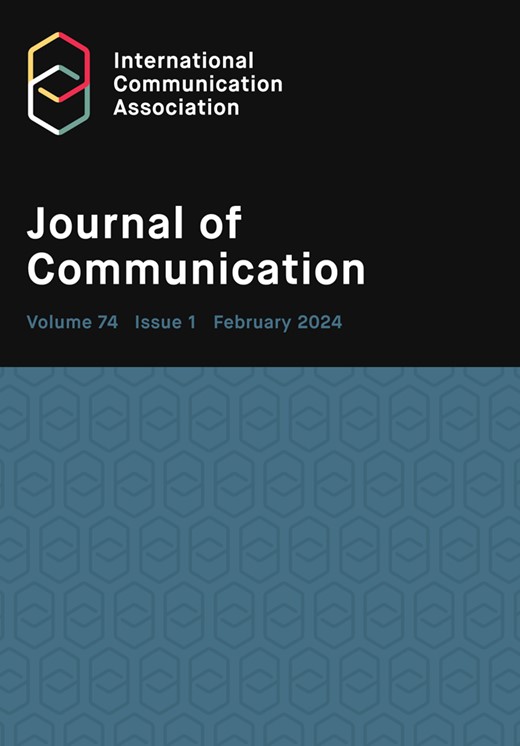面对面、视频会议还是音频会议?研究个人和伴侣间的信息处理在通信系统中的作用
IF 5.5
1区 文学
Q1 COMMUNICATION
引用次数: 0
摘要
虚拟交流的广泛应用使人们有必要了解其对交流效果的影响,以及不同形式的虚拟交流如何影响用户的信息处理。为此,本研究提出了动态人际交流系统模型,并假设直接感知的信息量会影响个人和双人的信息处理。通过研究视觉信息如何影响人际会议、视频会议和纯音频会议期间的生理模式(众所周知,生理模式是信息处理的基础),对这一假设进行了检验。结果表明,虽然纯音频交流能更好地维持情绪强度,但基于视觉的交流所需的初始认知努力更少。与有视觉但无体现信息的情境(视频交流)相比,视觉信息与身体存在相结合(面对面交流)导致的认知努力更低,积极情绪的同步性更强。这项研究表明,跨多个系统、在人内和人际层面同时研究人际交流非常重要。本文章由计算机程序翻译,如有差异,请以英文原文为准。
In-person, video conference, or audio conference? Examining individual and dyadic information processing as a function of communication system
The wide use of virtual communication has raised a need to understand its effect on communication effectiveness and the ways its different forms influence users’ information processing. To that end, this study proposes the Dynamical Interpersonal Communication Systems Model and posits that the amount of information directly perceived affects individual and dyadic information processing. This proposition is tested by examining how visual information influences physiological patterns, known to underlie information processing, during in-person, video, and audio-only conferences. Results indicate that while audio-only communication sustained emotional intensity better, visual-based communication required less initial cognitive effort. Visual information in combination with physical presence (in-person communication) resulted in consistently lower cognitive effort and stronger synchronization of positive emotions, compared to contexts involving visual but without embodied information (video communication). This study shows the importance of investigating interpersonal communication simultaneously across multiple systems and at the intra- and inter-personal levels.
求助全文
通过发布文献求助,成功后即可免费获取论文全文。
去求助
来源期刊

Journal of Communication
COMMUNICATION-
CiteScore
11.60
自引率
5.10%
发文量
41
期刊介绍:
The Journal of Communication, the flagship journal of the International Communication Association, is a vital publication for communication specialists and policymakers alike. Focusing on communication research, practice, policy, and theory, it delivers the latest and most significant findings in communication studies. The journal also includes an extensive book review section and symposia of selected studies on current issues. JoC publishes top-quality scholarship on all aspects of communication, with a particular interest in research that transcends disciplinary and sub-field boundaries.
 求助内容:
求助内容: 应助结果提醒方式:
应助结果提醒方式:


